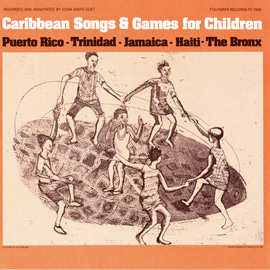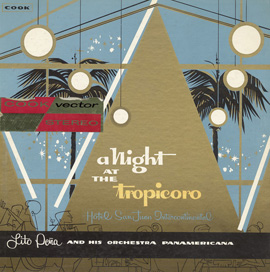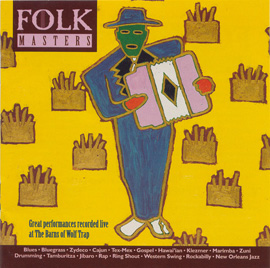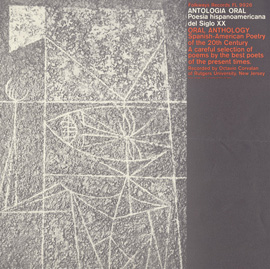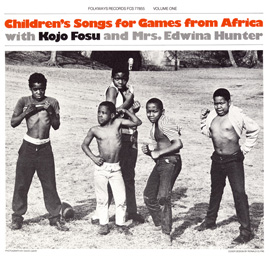Summary
These lessons aim to demonstrate polyrhythmic elements found throughout West African and Afro-Caribbean music. Students will listen to music from Ghana, Nigeria, Cuba, and Puerto Rico to learn how this polyrhythmic tradition followed Africans to the Caribbean as a result of the transatlantic slave trade. Students will learn the rumba clave pattern, cascara pattern, and a 6/8 bell pattern. All rhythms will be accompanied by a two-step dance pattern.
Suggested Grade Levels: 9–12, college/university courses
Country: Cuba, Puerto Rico, Ghana, Nigeria
Region: West Africa, the Caribbean
Culture Group: Yoruba of Nigeria, Ga of Ghana, Afro-Caribbean
Genre: West African, Afro-Caribbean
Instruments: Designed for classes with no access to instruments, but sticks, mambo bells, and shakers can be added
Language: English
Co-Curricular Areas: U.S. history, African-American history, history of Latin American and the Caribbean (also suited for non-music majors)
Prerequisites: None.
Objectives:
- Clap and sing clave rhythm
- Clap and sing cascara rhythm
- Clap and sing 6/8 bell pattern
- Dance two-bar phrase stepping on quarter note of each beat in 4/4 time
- Listen to music from Cuba, Puerto Rico, Ghana, and Nigeria
- Learn where Cuba, Puerto Rico, Ghana, and Nigeria are located on a map
- Understand that rhythmic ideas and phrases followed Africans from West Africa to the Caribbean as a result of the transatlantic slave trade
Material:
- “Las leyendas de Grecia” by Grupo Afrocuba, Raíces Latinas: Smithsonian Folkways Latino Roots Collection
- Liner notes for “Las leyendas de Grecia” by Grupo Afrocuba, from Raíces Latinas: Smithsonian Folkways Latino Roots Collection
- “Gome” from Folk Music of Ghana
- “Mambo Beat” by Tito Puente from Latin Jazz: La Combinación Perfecta
- “Yambú (Rumba)” by Santiago de Cuba musicians from Music of Cuba
- Liner notes from Music of Cuba
- “Salute to a Chief” from African and Afro-American Drums
- Liner notes from African and Afro-American Drums
Any type of sound system will work for these lessons.
These lessons work best if students are able to stand. Moving desks to the back of a classroom as a way to have students stand together would be optimal but not required.
A projector will be needed for showing maps if maps are available in the classroom.
Maps and other images are embedded in the lesson plans below.
Lesson Segments:
- Rumba Clave Rhythm
- Cascara Rhythm
- 6/8 Bell Pattern from the Yoruba People of Nigeria
- 6/8 Bell Pattern from Cuba
Lesson 1: Rumba Clave Rhythm
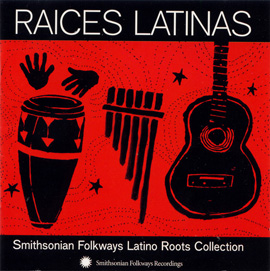
“Las leyendas de Grecia”
from Raíces Latinas: Smithsonian Folkways Latino Roots Collection (2002) | SFW40470
- Attentive Listening:
- Instructor plays the following selection for the class: “Las leyendas de Grecia” by Grupo Afrocuba
- Instructor asks students to describe the instruments they hear.
- After one minute, instructor asks students to focus on the instrument heard at the very beginning of the piece. The instrument is called the clave.
- Instructor: “The clave are two thick wooden sticks. The clave also refers to the rhythmic pattern created by hitting the sticks together. This rhythmic pattern serves as the foundation of various forms of Afro-Cuban music. The type of pattern we are learning today is called the rumba clave.”

- Engaged Listening:
- Instructor invites students to attempt play the clave rhythm along with the selection, or simply clap on the first beat of each measure in an attempt to identify where the first beat of each measure occurs.
- Active Listening:
- Instructor uses hand claps to teach the rumba clave pattern. Students are instructed to listen to the pattern a few times.

- Instructor claps the rumba clave two-bar pattern one time and asks the students to repeat the pattern back. This is repeated several times until the students gain a basic level of comfort with the rhythm.
- Instructor plays “Las leyendas de Grecia” again and asks students to clap along with the music using the rumba clave pattern.
- Creating World Music:
- Instructor demonstrates how to do an easy side step dance pattern at about eighty-five to ninety beats per minute. Each step occurs on the beat of 1 - 2 - 3 - 4.
- Instructor: “Watch me first. With the right foot take one small side step to the right followed by a side step with the left foot.”
- “Then, with the left foot take one small side step to the left followed by a side step with the right foot. On my count, repeat this pattern slowly.”
- Instructor directs the class to stop when students appear comfortable with the dance step.
- Instructor demonstrates dancing the two-step pattern while clapping the clave rhythm.
- Instructor: “Watch me first. I will do two bars of the two step dance followed by playing the clave rhythm while I am dancing the side step.”
- Instructor guides the students in doing the same thing.
- Instructor: “After my count of four, we will do the two-step pattern once, and then add the clave just as I showed you. One, two, ready, go...”
- Integrating World Music:
- Show the class on a map where Cuba is located.

- The group performing the selection is Grupo Afrocube Matanzas. The liner notes explain that the group is from a region of Cuba called Matanzas Province. Show students where Matanzas Province is on a map.

commons.wikimedia.org/wiki/File:Matanzas_Province_Location.png
Extension (Optional):
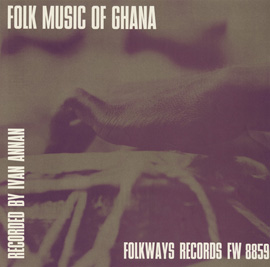
“Gome”
from Folk Music of Ghana (1964) | FW08859
- Use “Gome” from Folk Music of Ghana to demonstrate how a similar pattern exists in West African music.
- Explain that the pattern played in “Gome” would be called son clave if played in Afro-Cuban music.
- Demonstrate there is only one difference between this pattern and rumba clave. The difference is that the last note of the first measure of a 3-2 clave pattern is right on the fourth beat rather than on the and (eighth note) of the fourth beat.

- Explain that a clave type pattern is what holds the music together in these music styles. Other parts are built around clave type patterns. These patterns form the foundation of the music. This will assist students in understanding the role of a clave pattern in West African and Afro-Cuban music.
Assessment: Students will successfully conduct the two-step dance pattern and clap the clave rhythm while listening to “Las leyendas de Grecia.”
Lesson 2: Cascara Rhythm
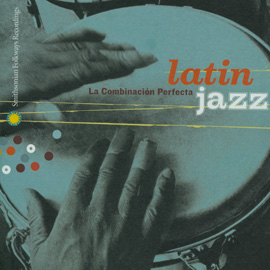
“Mambo Beat”
from Latin Jazz: La Combinación Perfecta (2002) | FW04802
- Attentive Listening: Instructor plays the following selection for the class.
- “Mambo Beat” by Tito Puente from Latin Jazz: La Combinación Perfecta.
- Instructor asks students to describe the instruments they hear.
- After one minute, the instructor asks students to focus on one of the rhythm instruments heard at the very beginning of the piece. This rhythm is played on the shell of the timbale and blends with the rhythm heard on a cowbell. The rhythm is called the cascara.
- Instructor shows an image of a pair of timbale, a cowbell, and the sticks used by the timbale player.

commons.wikimedia.org/wiki/File%3ATimbalesy_HLTBR-1011_firmy_Hayman.jpg
- Engaged Listening:
- Instructor invites students to attempt play the cascara rhythm along with “Mambo Beat,” or simply clap on the first beat of each measure in an attempt to identify where the first beat of each measure occurs.
- Active Listening:
- Instructor claps the cascara two-bar pattern one time and asks the students to repeat the pattern back. This is repeated several times until the students gain a basic level of comfort with the rhythm. Then, the instructor stops the class.

- Instructor demonstrates singing the pattern and instructs the class to do the same.
- Instructor also points out where the clave rhythm falls within the cascara pattern (below we see the cascara pattern on top and the rumba clave pattern on bottom).


- Creating World Music:
- Use the same dance as shown in Lesson 1. Refer to the dance instructions in Lesson 1.
- Instructor demonstrates dancing the two-step pattern while clapping the cascara rhythm using the same method of instruction found in Lesson 1.
- Integrating World Music:
- Vocabulary from Lessons 1 and 2”
- clave
- rumba clave
- son clave (from segment #1 extension lesson)
- cascara
- timbale
- cowbell
- Afro-Cuban
- Afro-Caribbean
- Caribbean
- African
- Cuba
- Matanzas Province
Assessment: Students will clap the cascara rhythm and dance the side step pattern along with the recording of “Mambo Beat.”
Extension (Optional): The extension for this segment would work best if performed after the assessment.
- Students will switch between playing the cascara pattern and the clave pattern.
- One half of the class will play the clave pattern, while the other half plays the cascara pattern.
- The two sides of the class will then switch roles.
- All of this will be done while maintaining the two-step dance pattern.
Lesson 3: 6/8 Bell Pattern from Cuba (notation is in 4/4 time below)
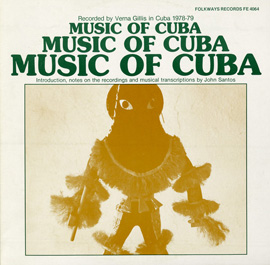
“Yambú (Rumba)”
from Music of Cuba (1985) | FW04064
- Attentive Listening: Instructor plays the following selection for the class.
- “Yambú (Rumba)” by Santiago de Cuba musicians from Music of Cuba.
- The instructor asks the students to notice the rhythm that begins the piece.
- Engaged Listening:
- Instructor invites students to attempt play the bell pattern rhythm along with “Yambú (Rumba)” or simply clap on the first beat of each measure in an attempt to identify where the first beat of each measure occurs.
- Active Listening:
- Instructor claps the 6/8 two bar bell pattern one time and asks the students to repeat the pattern back. This is repeated several times until the students gain a basic level of comfort with the rhythm. Then, the instructor stops the class.

- Instructor asks students to repeat the pattern.
- Instructor highlights that the liner notes from Music of Cuba explain the following:
- “By adding two notes to the common five-note clave patterns, a strong triple meter is established.”
- Instructor demonstrates: “We are only adding two notes to the clave rhythm practiced in Lesson 1.” (Bell pattern on top; rumba clave on bottom written in 4/4 time.)


- Creating World Music:
- Again, the same dance pattern will be used as seen in Lesson 1. Refer to the dance instructions in Lesson 1.
- Instructor demonstrates dancing the two-step pattern while clapping bell pattern rhythm using the same method of instruction found in Lesson 1.
Assessment: The class will clap the bell pattern and dance the side step pattern along with “Yambú (Rumba).”
Extension (Optional): The extension for this segment would work best if performed after the assessment. Half of the class will clap the bell pattern while the other half of the class claps the clave pattern, then reverse roles.
Lesson 4: 6/8 Bell Pattern from the Yoruba People of Nigeria: Drawing a Connection to the 6/8 Afro-Cuban Bell Pattern
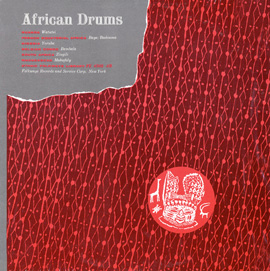
“Salute to a Chief”
from African and Afro-American Drums (1954) | FW04502
- Integrating World Music:
- Show the class a map of West Africa. Point out where Nigeria is. Then show the class a map of the world to explain where West Africa is in relation to the United States and the Caribbean.


- Further information about the transatlantic slave trade
- Attentive Listening:
- Instructor plays “Salute to a Chief” from African and Afro-American Drums.
- Instructor asks the class to listen for similarities to the rhythms heard in “Yambú (Rumba)” from Lesson 3.
- Instructor asks students if they hear the same bell pattern heard in “Yambú (Rumba).”
- Instructor explains that certain rhythms survived as slaves were brought to the Caribbean through the transatlantic slave trade.
- Engaged Listening:
- Instructor invites students to attempt play the cascara rhythm along with the “Salute to a Chief” or simply clap on the first beat of each measure.
- Active Listening:
- Instructor claps the 6/8 two-bar pattern one time and asks the students to repeat the pattern back. This is repeated several times until the students gain a basic level of comfort with the rhythm. Then, the instructor stops the class.

- Instructor asks students to repeat the pattern.
- Instructor reminds the class that the bell pattern adds just two notes to the clave rhythm practiced in Lesson 1 as stated in the liner notes from Music of Cuba.
- “By adding two notes to the common five-note clave patterns, a strong triple meter is established.”
- Creating World Music:
- Again, refer to the dance instructions used in Lesson 1.
- Instructor demonstrates dancing the two-step pattern while clapping the bell pattern rhythm using the same method of instruction found in Lesson 1.
Assessment: The class will clap the bell pattern and dance the side step pattern along with the recording of “Salute to a Chief.”
1 Special thanks to Dr. Marisol Berríos-Miranda and Dr. Shannon Dudley of the University of Washington for demonstrating some of these lessons and assisting me with the overall concept of this unit.


